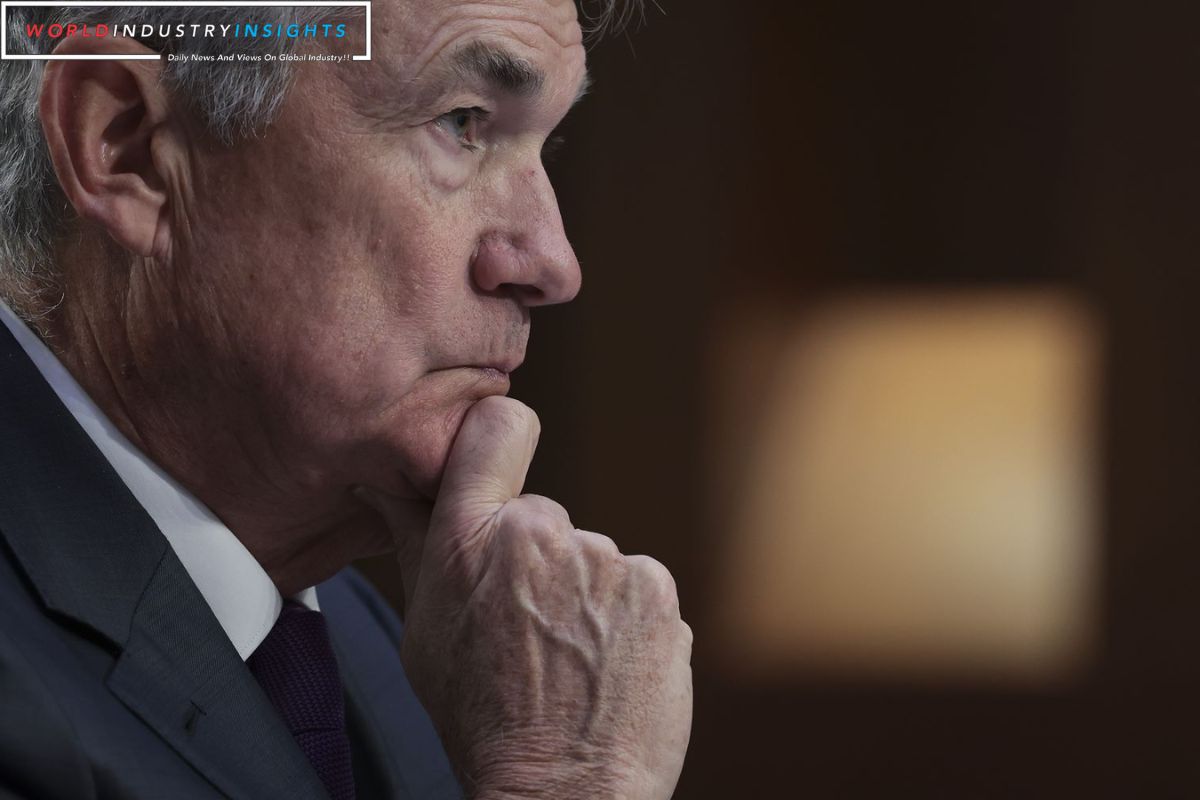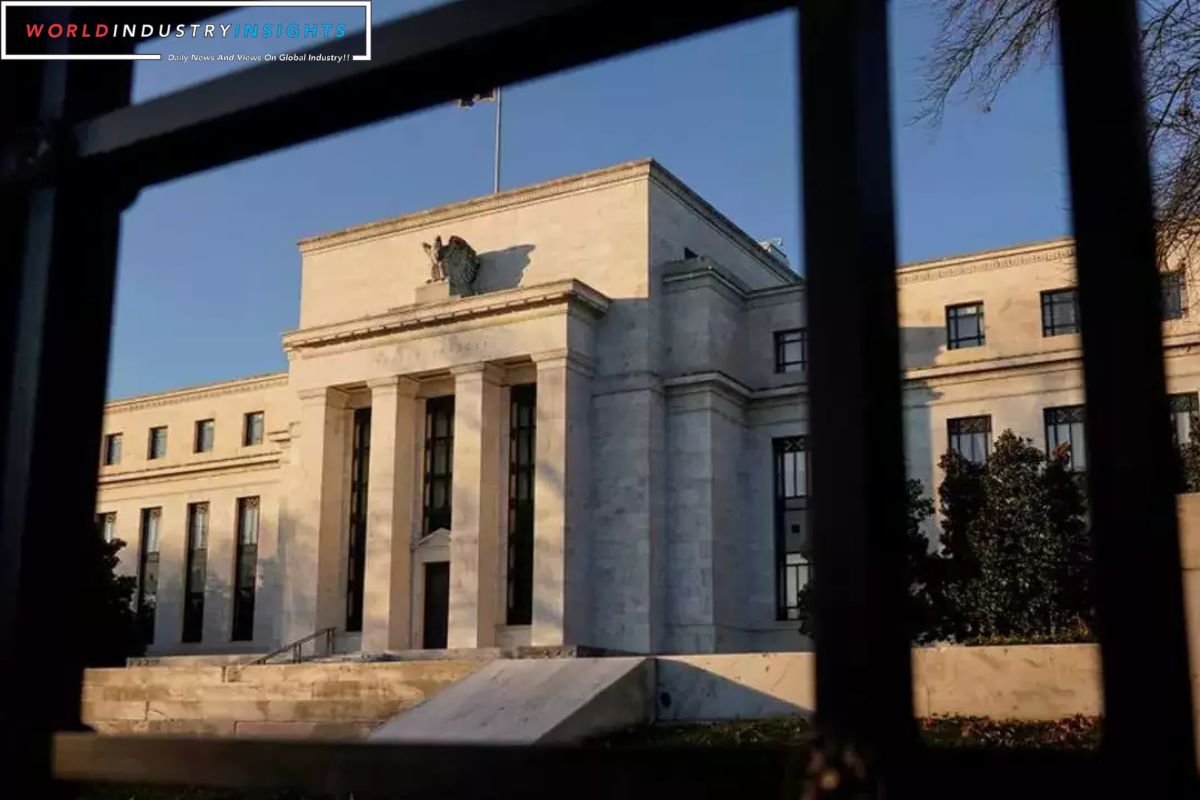US Inflation: Are you wondering if the US inflation report is signaling a potential rate cut by the Federal Reserve? Well, let me tell you, it certainly seems that way.
The latest data suggests that underlying price pressures are not as strong as initially anticipated, raising concerns about the health of the economy. This, combined with slower consumer spending and economic growth, has led many experts to believe that a rate cut might be on the horizon.
Additionally, the recent slowdown in cargo handling in national waterways has further fueled speculation about the need for monetary policy intervention. As the central bank closely monitors these developments, it becomes increasingly likely that we may see a cut in interest rates sooner rather than later.
Stay tuned for more updates on this crucial economic matter.
Key Takeaways
- Recent decline in US prices, with the Personal Consumption Expenditures (PCE) price index dipping by 0.1% last month, indicating a decrease in inflationary pressures.
- Speculation about a potential interest rate cut by the Federal Reserve in March, with financial markets factoring in a 72% chance of a rate cut at the Fed’s policy meeting.
- Sustained monthly inflation readings of 0.2% needed to meet the Fed’s 2% inflation target, suggesting that further monitoring is necessary to determine if a rate cut is warranted.
- Positive correlation between consumer spending and economic growth, with recent increase in consumer spending and rise in real consumer spending indicating stronger purchasing power and potential for GDP growth.
Also Read: Global Markets Take a Dip as Investors: Anticipate Key US Inflation Data
US Inflation and Potential Fed Rate Cut
You should consider the potential for a Fed rate cut in light of the US inflation report. The recent decline in US prices, the first in over 3-1/2 years, has raised eyebrows among economists.
The Personal Consumption Expenditures (PCE) price index dipped by 0.1% last month, with food prices dropping by 0.1% and energy prices declining by 2.7%. This unexpected decrease in inflation has sparked speculation about a potential interest rate cut by the Federal Reserve in March.
Financial markets are already factoring in a 72% chance of a rate cut at the Fed’s policy meeting. With the Federal Reserve signaling the end of its historic monetary policy tightening, a rate cut seems like a logical next step to stimulate the economy.
Lower borrowing costs in the near future are anticipated, which could have a positive impact on various sectors.
Underlying price pressures
Continuing from the previous subtopic, we can examine the underlying price pressures that contribute to the potential for a Fed rate cut. In November, the PCE price index fell 0.1%, indicating a decline in inflationary pressures. This was a welcome change after the index remained unchanged in October. Additionally, the core PCE price index, which excludes volatile food and energy prices, only advanced 3.2% year-on-year in November, the smallest increase since April 2021.
These figures suggest that underlying price pressures are easing, providing room for the Federal Reserve to consider a rate cut. However, it is important to note that sustained monthly inflation readings of 0.2% are still needed to meet the Fed’s 2% inflation target. Therefore, while the current data shows some improvement, further monitoring is necessary to determine if a rate cut is warranted.
| Price Index | Year-on-Year Change |
|---|---|
| PCE | 2.6% |
| Core PCE | 3.2% |
Consumer Spending and Economic Growth
Examining the impact of consumer spending and economic growth, one can observe a positive correlation between the two factors. When consumers spend more, it stimulates economic growth and vice versa.
The recent increase in consumer spending, as indicated by the 0.2% rise in November, suggests a potential boost to economic growth. This is further supported by the rise in real consumer spending, adjusted for inflation, which indicates a stronger purchasing power among consumers.
Additionally, the surge in single-family housing starts and building permits signifies a growing demand in the housing sector, which contributes to economic expansion.
As economists revise their GDP growth estimates upwards, projecting a potential annualized rate of 2.7%, it becomes evident that consumer spending plays a vital role in driving economic growth.
Cargo Handling in National Waterways
Cargo handling in national waterways has experienced significant growth, increasing by over 1700% from 6.83 MMT in 2013-14 to 126.15 MMT in 2022-23. This remarkable expansion is a testament to the government’s efforts to enhance the country’s maritime infrastructure.
With the identification of a total potential of 1300 MTPA cargo movement by coastal shipping by 2047, it’s evident that there’s immense untapped potential in this sector. The development of five dedicated coastal berths has further bolstered the handling capacity, creating a capacity of 6.34 MTPA.
The introduction of the priority berthing policy and green channel clearance by the Ministry of Ports, Shipping and Waterways has also facilitated faster evacuation of coastal cargo at ports.
This growth in cargo handling in national waterways is a positive sign for the economy, as it not only boosts trade but also creates employment opportunities and contributes to overall economic development.
US Inflation Report and Central Bank’s Target
With the remarkable growth in cargo handling in national waterways, let’s now shift our focus to the impact of the US inflation report on the central bank’s target.
The US inflation report plays a crucial role in the central bank’s decision-making process. It provides insights into the current state of inflation and whether it aligns with the central bank’s target of 2%. If the report indicates that inflation is within the target range, it suggests that the central bank’s monetary policy measures have been effective in maintaining price stability and promoting economic growth.
This stability in inflation levels can support economic growth and provide confidence to businesses and consumers. Additionally, the inflation report can influence financial markets, as it may lead to market stability and reduce uncertainty and volatility. Investors may adjust their strategies based on the report, and it could impact interest rates and bond yields.
Therefore, the US inflation report is a key indicator that provides valuable information about the future outlook for the economy and the central bank’s monetary policy decisions.
Conclusion
In conclusion, the recent US inflation report strongly indicates the possibility of a Federal Reserve rate cut in the near future. The underlying price pressures and sluggish consumer spending are clear signals of a struggling economy.
Additionally, the challenges faced by cargo handling in national waterways further highlight the need for immediate action. It’s evident that the central bank’s target must be taken into consideration to ensure economic stability and growth.
A rate cut seems to be the logical step forward.
Our Reader’s Queries
What is US inflation rate today?
Inflation has risen by 3.1% in November 2023 compared to the previous year. It’s crucial to comprehend the significance of inflation, its impact, and how to manage it while making financial choices. This knowledge can assist in making informed decisions and avoiding financial pitfalls.
What is the core inflation rate in the US?
In November 2023, the Consumer Price Index (CPI) stood at 307.05, while the Core Consumer Prices were at 312.25. The Core Inflation Rate was recorded at 4.00%, and the CPI Core Core was at 2.57%. These figures provide valuable insights into the current state of the economy and help businesses and individuals make informed decisions.
Will inflation go down in 2024?
In 2024, US inflation is expected to decrease even further and reach the Federal Reserve’s 2% target. This is due to the fading of economic disruptions caused by the pandemic and the possibility of some goods even experiencing price declines.
Will America’s good inflation last?
Economists predict that consumer price inflation may decrease towards the Fed’s target by the end of 2024 due to the possibility of a longer rent cooldown and slower increases in goods prices. In fact, there is a chance that it may even fall below 2 percent, according to some experts.




